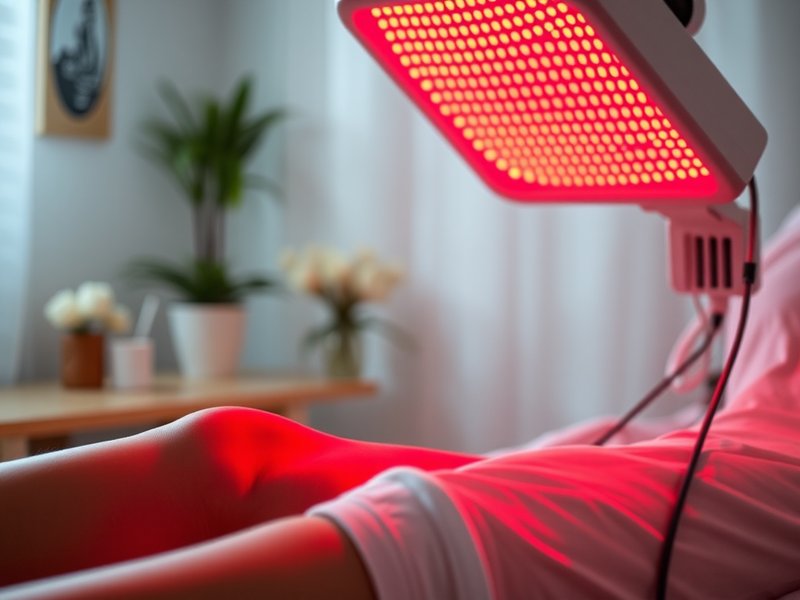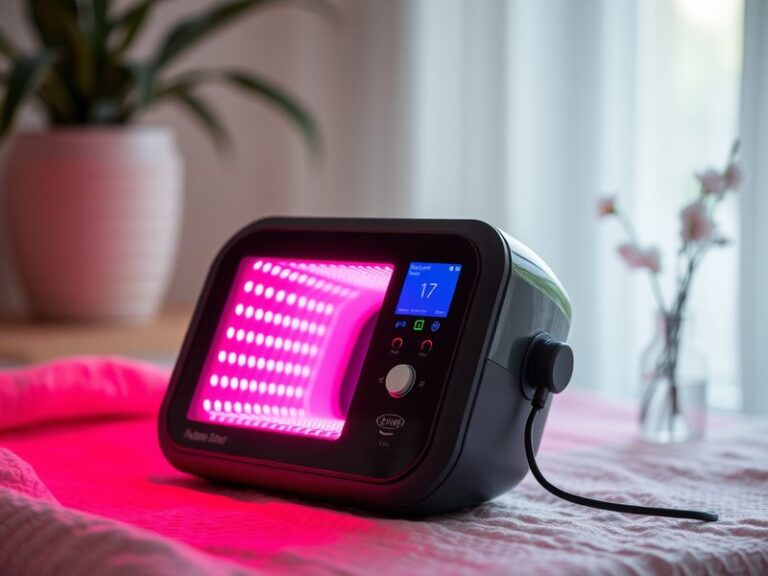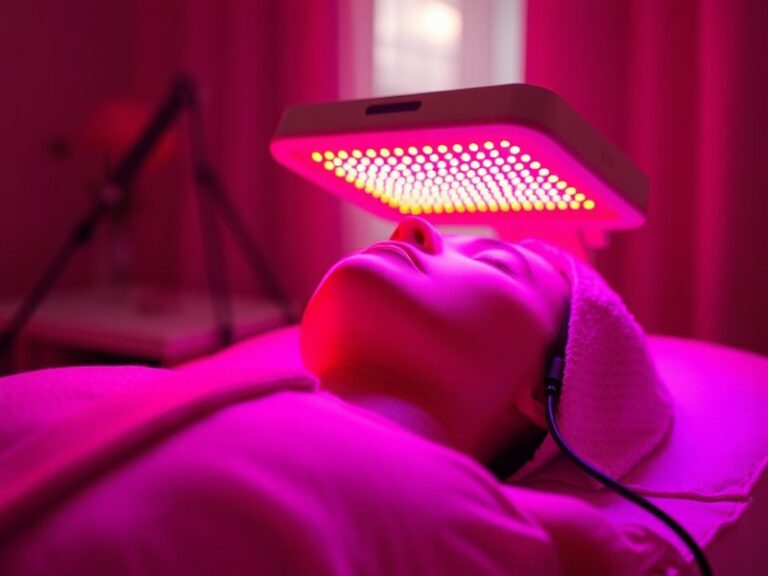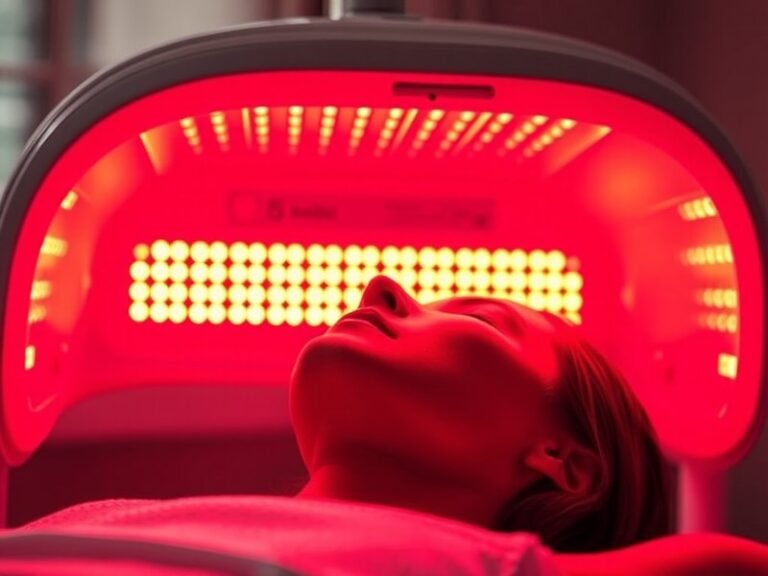Can You Use Red Light Therapy After Knee Replacement?
Can You Use Red Light Therapy After Knee Replacement?
Have you recently undergone knee replacement surgery and are curious about ways to enhance your recovery? If so, you may be wondering whether red light therapy (RLT) could play a role in your rehabilitation process.
Discover the story in Does Red Light Therapy Boost Collagen?
This article will explore the feasibility and potential benefits of using red light therapy after knee replacement surgery, alongside important considerations and alternatives. By the end, you’ll have a clearer understanding of how this therapy may affect your recovery journey.
Key Takeaways
- Red light therapy may aid in pain relief and promote tissue healing post-surgery.
- Individual circumstances play a critical role in determining its suitability; consult healthcare providers.
- There are alternative therapies available if RLT is not appropriate for you.
What is Red Light Therapy?
Red light therapy is a non-invasive treatment that involves exposing the skin to low-level wavelengths of red light. This process is believed to stimulate cellular processes that promote healing and regeneration. RLT can be administered using different devices, including handheld units and larger light panels.
Research indicates that red light wavelengths can penetrate the skin, enhancing mitochondrial function and increasing adenosine triphosphate (ATP) production, which is vital for cell health and repair. Given its ability to support healing, RLT has gained popularity in various therapeutic applications, including post-surgical recovery.
What are the Benefits of Red Light Therapy?
Understanding the potential benefits of red light therapy is essential for those considering it after a knee replacement. Here are some key advantages:
Pain Management
Red light therapy has been shown to reduce pain intensity in various conditions, including after knee surgeries. Studies indicate that patients who utilize RLT report decreased postoperative pain levels, which can enhance overall comfort during recovery.
Accelerated Healing
RLT promotes faster tissue healing by increasing blood circulation and cellular activity. This can help reduce recovery time after knee surgery, allowing you to regain mobility and return to daily activities more quickly.
Reduced Inflammation
Chronic inflammation can hinder recovery after surgery. Red light therapy has anti-inflammatory properties that may minimize swelling and promote a healthier healing process.
Enhanced Range of Motion
The combined effect of pain relief and reduced inflammation can lead to improved range of motion in the knee joint post-surgery. This is crucial for physical therapy efforts and overall rehabilitation.
Is it Possible to Use Red Light Therapy After Knee Replacement?
Yes, using red light therapy after knee replacement is indeed possible, but individual circumstances vary. Many patients consider it a complementary therapy to improve recovery outcomes. However, it’s essential to consult your healthcare provider before proceeding with RLT.
What are the Advantages of Using Red Light Therapy Post-Operation?
Utilizing RLT after knee replacement surgery can provide several advantages, including:
Non-invasive Treatment
RLT is a non-invasive option that does not require medications or invasive procedures, which is particularly appealing to post-surgery patients focused on natural recovery methods.
Convenience
Many RLT devices are designed for home use, allowing patients the flexibility to integrate therapy into their recovery routines without frequent visits to clinics or care facilities.
Fewer Side Effects
Compared to pharmaceutical pain relievers, RLT generally has fewer side effects, making it a safer long-term option for managing pain and promoting recovery.
Potential for Personalized Care
RLT can be tailored to individual needs, such as adjusting exposure times and frequencies based on personal response and recovery progress.
What are the Disadvantages of Using Red Light Therapy Post-Operation?
While there are several advantages to using RLT, it is important to consider potential disadvantages as well.
Initial Cost of Devices
Quality red light therapy devices can be expensive. Patients should consider whether the investment aligns with their recovery goals and budget.
Limited Research in Specific Populations
While much research supports the benefits of RLT, not all studies specifically target populations recovering from knee replacement. Therefore, results may vary.
Need for Consistency
For RLT to be effective, consistency is key. Patients must be committed to regular sessions, which can be challenging with a busy post-surgery recovery schedule.
What are the Things to Consider Before Using Red Light Therapy?
Before diving into red light therapy, consider the following factors:
Consultation with Healthcare Providers
Always consult your doctor or physical therapist before starting any new therapy post-surgery. They can provide personalized advice based on your recovery progress.
Learn all about it in Does Red Light Therapy Emit Radiation?
Understanding Device Used
Not all RLT devices are created equal. Research the safety and efficacy of the device you intend to use. Ensure it emits light at the correct wavelengths for therapeutic effects.
Monitoring Your Response
Pay attention to how your body reacts to RLT. Keeping a recovery journal can help you track improvements or any adverse effects, allowing for informed adjustments.
What are the Alternatives to Red Light Therapy?
If red light therapy isn’t suitable for your needs, various alternatives can support recovery after knee replacement surgery.
Physical Therapy
Engaging in structured physical therapy is vital post-surgery. A licensed therapist can guide you through exercises that enhance strength, flexibility, and range of motion.
Cold Therapy
Applying cold packs can effectively reduce swelling and alleviate pain. This method can be used in combination with other therapies.
Electrical Stimulation
Transcutaneous electrical nerve stimulation (TENS) can offer pain relief by using low-voltage currents to disrupt pain signals transmitted to the brain.
Hydrotherapy
Water-based exercises can be a gentle and effective way to regain mobility without putting excessive strain on surgical sites.
Conclusion: Is it Recommended to Use Red Light Therapy?
In summary, red light therapy can be a beneficial addition to your rehabilitation routine after knee replacement surgery. However, it’s crucial to consult with your healthcare provider to tailor the approach to your specific recovery needs. By weighing the benefits, disadvantages, and alternatives, individuals can make informed decisions to optimize their recovery and improve their overall well-being.
Frequently Asked Questions
Can red light therapy be used on an open wound?
No, red light therapy should not be applied directly to an open wound. It is vital to wait until the surgical site has closed and healed sufficiently before using RLT.
How often should I use red light therapy after knee replacement?
Many practitioners recommend starting with several sessions a week and adjusting based on your recovery progress and personal comfort levels. Always best to align this with a healthcare provider’s guidelines.
Is red light therapy safe?
Generally, red light therapy is considered safe and non-invasive. However, it’s important to follow device instructions and consult healthcare providers, especially after surgery.
Will insurance cover red light therapy?
Current insurance policies often do not cover red light therapy as it is typically considered an alternative treatment. Verify coverage with your insurance provider.
How long does a red light therapy session typically last?
Sessions can vary, but most commonly, they last between 10 to 30 minutes, depending on the device and treatment area. Always follow the manufacturer’s guidelines for the best results.






